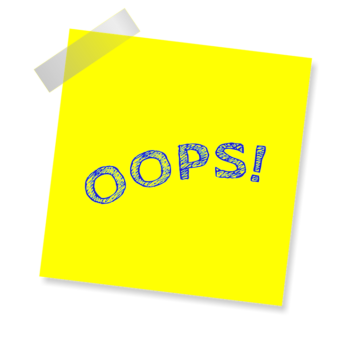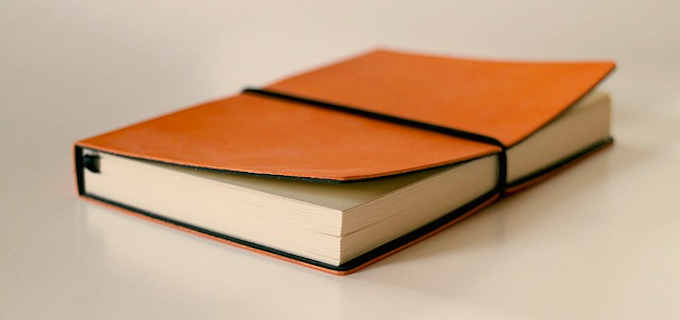Lesson Improvement Notes: Be Kind to the Future You
A MiddleWeb Blog
 This blog post is a reminder to myself. I hope by writing it, it will also be helpful to you, because I can imagine that you might have the same problem:
This blog post is a reminder to myself. I hope by writing it, it will also be helpful to you, because I can imagine that you might have the same problem:
Sometimes you can’t remember how you taught something last year.
I teach history, it’s true. But I think my basic suggestions will apply, whatever you’re teaching.
Right now, I just want to scream at last year’s me. Check out the following notes I wrote down on the back of a reading about the Haymarket Riot:
Start with part B tomorrow.
Show Homestead Strike film clip.
How extraordinarily unhelpful is that?? I am constantly amazed by how much one can forget in 365 days, which is when I last taught about the Haymarket Riot and the Homestead Strike. And so I ask my last year’s self, my frustration mounting:
Part B of what?? Was tomorrow a Wednesday or a Thursday? Because Thursdays are advisory days and we have shorter periods.
Which Homestead Strike film clip?! I see links to two different Homestead Strike videos in a google doc I have. There’s not even a note about how long it is!

This is my third year teaching the same prep, and in many ways, my job has become immeasurably easier. I finally have a reading on the Pullman Strike that I like. Apparently, I am aware of two video clips on the Homestead Act from which to choose. This is all good and one of the perks of repeating preps. But staying organized is still a struggle.
The paperwork (or online work) and organization skills demanded of teachers are extraordinary and – full disclosure – not my strong suit. But I’ve learned to adjust to the organization skills I have (as opposed to the ones I sometimes wish I had).
The answer? A few key Google docs and my Orange Notebook.
While I am still wrestling with the pros and cons of a paper calendar vs. the one on my phone for my personal life, for work I am mostly online. I use Google Drive and have a folder for each unit, a few sub-folders within where needed. I have a document in each folder that I label, “A-Ideas for the ___ Unit.” The “a” is so it comes up first in my alphabetical list. This is the document where I jot down random thoughts about the unit and links to things I find that I want to check out.
When I want to make changes to a document for next year, I make a copy of the current year’s document and then retitle it “next year Haymarket documents.” I either make the change right away, or if it’s more complicated, I’ll write a comment to myself about what I would like to change.
Over the summer, I can search my drive for the “next year” documents and make the changes. (Okay, I make some of them. Some of them I wait until the day before I need them.) Then they are renamed, “Haymarket documents 2018.” The key thing is to note what needs to fixed or changed or added or scrapped right after you have used it while it is fresh in your mind. The more that I do now, the easier my life will be a year from now.
My one concession to the twentieth century world of paper is my Orange Notebook. In this notebook, I jot down the date and day of week with the “question of the day” – the learning target I put in the form of a question on my board each day for students. Then in the notebook, I scribble down briefly what I did in a list format.
If I refer to a handout, I write in the notebook to see GD (Google Doc) and then the title of the document, in order to avoid past mistakes (see above vague reference to Part B of who knows what). If I am showing a video clip or using a website, it is easier to have a link. So I have a full online calendar I created that has the links to those resources in it. So I would write in my notebook, “link to video in Cal doc.”
Except, of course, when I forget. Like I did about the Homestead Strike video.
Quick scribbles vs. essential observations
Over the summer while planning for the first month back of school, I looked at one day’s entry where I wrote, “Reading Transcont. RR.” Did I read this aloud? Or did students? Did they read it on their own? I couldn’t for the life of me remember. So be specific where it matters. Note how long it took to do the reading. As you know, different classes are different, so if a lesson flopped in 3rd period, write that down. Write down what you tweaked so that it went better 4th period. Next year’s 3rd period will thank you.
I also note things like, “could cut the discussion out if advisory day” or “shave last few minutes off video if advisory day.” I will make observations like “hectic lesson due to yearbook photos” or “worked well with PARCC schedule.” This helps me plan better for the following year and account for the reality of interruptions and changes in bell schedules on testing days. I noticed this year, for example, that a lesson on the Sherman Antitrust Act was a little challenging on a Wednesday that happened to be Halloween. I wrote that down to remind me to allow for the craziness of Halloween in middle school.
Life outside the classroom also influences our lessons. I cut short a lesson on political cartoons on October 29 so we could talk briefly about the shooting at the Tree of Life synagogue in Pittsburgh. And a lesson I am doing next week will be better this year because I (hopefully) won’t be absent. Last year, I had a sick child at home, so I had to readjust.

Looking forward with reflections
The Orange Notebook is also a place for brief reflections that aid in long term planning. I will note things like “this lesson needed a more student-focused activity – even 5 minutes would help.” Or “find a better reading on the Pullman strike for next year.” This is only useful if you follow up on your own good suggestions.
I had to laugh this year, because in the introductory paragraph to the aforementioned Pullman reading, I had forgotten to delete the note I wrote to myself, “Insert a map of where Pullman is located in relation to school,” and a few of my Chicago-area students came up and were confused about what map I was talking about. I told them it was a note to myself and they should turn the page. When they did, they saw that – indeed – I had inserted a map showing where Pullman is in relation to their school. Way to go, last year’s me!
Okay…I am a little less angry at myself now.
Think about what you need to include to help your next year’s you. You’ll then really have something to be thankful about.
If you have other ideas about how to send advice to your future self, please share in the comments!





































What worked well for me (so we’ll I’ve done it for years) is a 2-tier system: the google calendar and the end-of-unit reflections. I use the calendar to record the couple-word version of each class, and make SURE I edit this if things change (it takes two seconds). Then, about once per month, I write out unit reflections with things I liked, things that bothered me, and ideas for next year, all in one document. That way, I can quickly see how long things took last year, and then if I want more info, it’s quick and easy to see what I thought I should work on!
Great ideas! I also do end-of-unit reflections, especially as I grade things and notice errors.